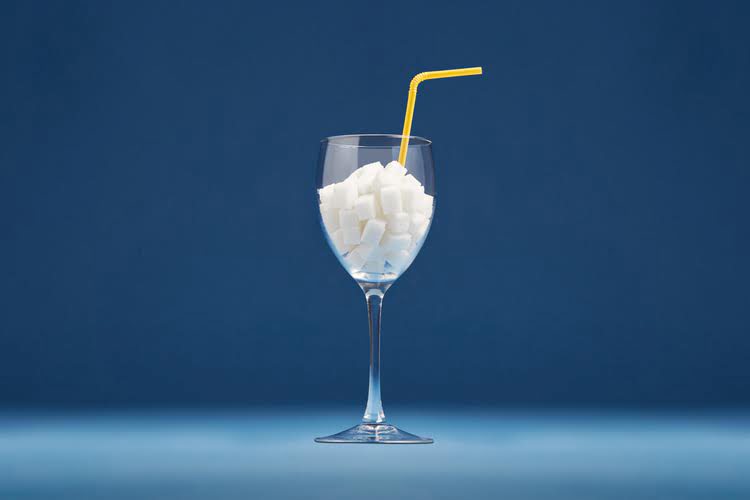Eventually, after three weeks of alcohol abstinence, the number of transporter and receptor sites decreased. This change meant that there was less dopamine available to bind to the receptor sites and more left unused. This created a hyper dopaminergic state, or one where the dopamine levels are higher than normal. But while having more dopamine may sound like a good thing, according to the study both hypo and hyper dopaminergic states put abstinent drinkers at risk of relapse.
How — and why — to fit more fiber and fermented food into your meals
Alcoholism: effects on the brain’s dopamine system Newsroom – McGill Newsroom
Alcoholism: effects on the brain’s dopamine system Newsroom.
Posted: Mon, 12 Aug 2013 07:00:00 GMT [source]
D2 receptors bind with inhibitory G protein and thus reduce the production of AC and resulting cAMP. The authors declare that the research was conducted in the absence of any commercial or financial relationships that could be construed as a potential conflict of interest. DNA extraction and sequencing were performed by the Louisiana State University School of Medicine Microbial Genomics Resource Group.1 The genomic DNA was extracted using the QIAamp DNA Stool Mini Kit (Qiagen, Valencia, CA), modified to include bead-beating and RNase A treatment. A negative control was set for checking any potential bacterial DNA that exists in chemicals used during the DNA extraction process. Alcohol reaches your brain in only five minutes, and starts to affect you within 10 minutes. While alcohol is a relaxant and can make you feel good at first, chronic alcohol use can cause mental health issues.

Amygdala Neurosciences Awarded $2.0 million NIH Grant to Conduct IND Enabling Studies
Sucrose, saccharin, or quinine consumption was not affected by different brands of chow, suggesting that the increase in alcohol consumption observed with LD5001 and LD5053 was not due to altered sweet and bitter taste perception. Furthermore, alcohol consumption in mice fed LD5001 was more resistant to https://ecosoberhouse.com/ quinine adulteration when compared with mice that were fed TL2019S. Gut microbiome analysis revealed that the gut bacteria in water- and alcohol-drinking mice fed LD5001, LD5053, and TL2019S significantly differed in terms of alpha- and beta-diversity and displayed distinct gut microbial structures.
- (For more information on endogenous opioid peptides, see the article by Froehlich, pp. 132–136.) This hypothesis is supported by observations that chemicals that inhibit the actions of endogenous opioid peptides (i.e., opioid peptide antagonists) prevent alcohol’s effects on dopamine release.
- The study further found that men exhibit a greater release of dopamine when they drink than women.
The dopamine system and brain reward circuitry
1The term “dopaminergic” refers to both the neurons and the signaling processes that use dopamine. A reward (e.g., food) usually is a complex stimulus having primary (e.g., calories) as well as secondary (e.g., taste and smell) motivational properties. When discussing the consequences of alcohol’s actions on the brain, researchers frequently use terms such as motivation, reinforcement, incentives, and reward.
Moreover, work in non-human primates highlights a role for the prefrontal cortex in reward signaling [26], and human fMRI studies show that prefrontal cortex drives phasic cue responses in the VTA [27, 28]. However, the dopaminergic circuitry mediating AB to alcohol cues in humans––and the extent to which this circuitry overlaps with the circuitry mediating conditioned alcohol and dopamine responses to non-drug rewards––remains unclear. As a further development of the partial agonist concept, Nobel Laureate Arvid Carlsson and co‐workers, developed a novel family of compounds based on their ability to stabilize, that is to stimulate, suppress or show no effect on the dopamine activity depending on the prevailing dopaminergic tone [189].

ABMRF Invests in Amygdala Neurosciences to Develop ANS-858 for Alcohol Use Disorder
The unique association of this connection with alcohol AB, but not generalized reward AB, suggests that alcohol cues become imbued with distinct emotional and motivational qualities beyond their ability to predict reward. Ethanol is a liposoluble neurotropic substance which penetrates the blood-brain barrier and inhibits central nervous system (CNS) functions; it is directly toxic to the brain. The etiology and pathology of alcohol dependence is the outcome of a complex interplay of biological, psychological and socio-environmental factors. One caveat with our study is that, unlike alcohol-drinking mice, water-drinking mice were maintained on TL2019S, LD5053, or LD5001 and were not subject to diet switching. Hence, it is possible that some of the changes in bacterial diversity observed in alcohol-drinking mice after the diet switch may not be observed in mice that were maintained on a single type of diet throughout the experiment. However, since we waited almost 9 days after the diet switch to collect stool samples from alcohol-drinking mice, the gut microbiome could have stabilized at this time point and (David et al., 2014) be largely representative of the diet post-switch.



